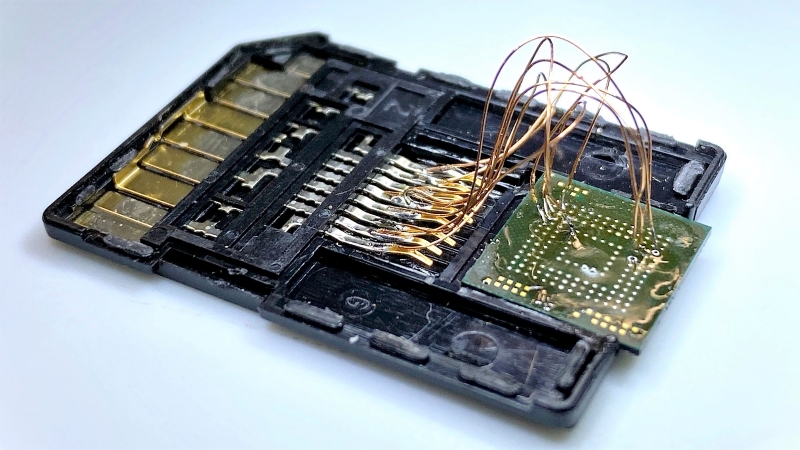Do humanoid robots dream of electric retirement? Who knows, but maybe we can ask Boston Dynamics’ Atlas HD, which was officially retired this week. The humanoid robot, notable for its warehouse Parkour and sweet dance moves, never went into production, at least not as far as we know. Atlas always seemed like it was intended to be an R&D platform, to see what was possible for a humanoid robot, and in that way it had a heck of a career. But it’s probably a good thing that fleets of Atlas robots aren’t wandering around shop floors or serving drinks, especially given the number of hydraulic blowouts the robot suffered. That also seems to be one of the lessons Boston Dynamics learned, since Atlas’ younger, nimbler replacement is said to be all-electric. From the thumbnail, the new kid already seems pretty scarred and battered, so here’s hoping we get to see some all-electric robot fails soon.
enhance!5 Articles
Hackaday Links: March 3, 2024
Who’d have thought that $30 doorbell cameras would end up being security liabilities? That’s the somewhat obvious conclusion reached by Consumer Reports after looking at some entry-level doorbell cameras available through the usual outfits and finding glaring security gaps which are totally not intentional in any way.
All these cameras appear to be the same basic hardware inside different enclosures, most supporting the same mobile app. Our favorite “exploit” for these cameras is the ability to put them into a pairing mode with the app, sometimes by pressing a public-facing button. Slightly more technically challenging would be accessing images from the app using the camera’s serial number, or finding file names being passed in plain text while sniffing network traffic. And that’s just the problems CR identified; who knows what else lurks under the covers? Some retailers have stopped offering these things, others have yet to, so buyer beware.
Speaking of our techno-dystopian surveillance state, if you’ve had it with the frustrations and expense of printers, has Hewlett-Packard got a deal for you. They want you to never own a printer again, preferring that you rent it from them instead. Their “All-In Plan” launched this week, which for $6.99 a month will set up up with an HP Envy inkjet printer, ink deliveries, and 24/7 tech support. It doesn’t appear that paper is included in the deal, so you’re on your own for that, but fear not — you won’t go through much since the entry-level plan only allows 20 prints per month. Plans scale up to 700 prints per month from an OfficeJet Pro for the low, low price of $36. The kicker, of course, is that your their printer has to be connected to the Internet, and HP can pretty much brick the thing anytime they want to. The terms of service also explicitly state that they’ll be sending your information to advertising partners, so that’ll be fun. This scheme hearkens back to the old pre-breakup days of AT&T, where you rented your phone from the phone company. That model made a lot more sense when the phone (probably) wasn’t listening in on everything you do. This just seems like asking for trouble.

It’s been a while since Ingenuity‘s final rough landing on Mars permanently grounded the overachieving helicopter, long enough that it’s time for the post-mortem analyses to begin. The first photographic evidence we had was a shadowgram from one of the helicopter’s navigational cameras, showing damage to at least one of the rotor tips, presumably from contact with the ground. Then we were treated to a long-distance shot from Ingenuity‘s rover buddy Perseverance, which trained its MASTCAM instruments on the crash zone and gave us a wide view of its lonely resting place.
Now, geovisual design student [Simeon Schmauβ] has taken long shots made with the rover’s SuperCam instrument and processed them into amazingly detailed closeups, which show just how extensive the damage really is. One rotor blade sheared clean off on contact, flying 15 meters before gouging a hole in the regolith. Another blade looks to be about half gone, while the remaining two blades show the damaged tips we’ve already seen. That the helicopter is still on its feet given the obvious violence of the crash is amazing, as well as an incredible piece of luck, since it means the craft’s solar panel is pointing in roughly the right direction to keep it powered up.
This Week In Security: SolarWinds And FireEye, WordPress DDoS, And Enhance!
The big story this week is Solarwinds. This IT management company supplies network monitoring and other security equipment, and it seems that malicious code was included in a product update as early as last spring. Their equipment is present in a multitude of high-profile networks, like Fireeye, many branches of the US government, and pretty much any other large company you can think of. To say that this supply chain attack is a big deal is an understatement. The blame has initially been placed on APT42, AKA, the Russian hacking pros.
The attack hasn’t been without some positive effects, as Fireeye has released some of their internal tooling as open source as a result. Microsoft has led the official response to the attack, managing to win control of the C&C domain in court, and black-holing it.
The last wrinkle to this story is the interesting timing of the sale of some Solarwinds stock by a pair of investment firms. If those firms were aware of the breech, and sold their shares before the news was made public, this would be a classic case of illegal insider trading. Continue reading “This Week In Security: SolarWinds And FireEye, WordPress DDoS, And Enhance!”
“Enhance” Is Now A Thing, But Don’t Believe What You See
It was a trope all too familiar in the 1990s — law enforcement in movies and TV taking a pixellated, blurry image, and hitting the magic “enhance” button to reveal suspects to be brought to justice. Creating data where there simply was none before was a great way to ruin immersion for anyone with a modicum of technical expertise, and spoiled many movies and TV shows.
Of course, technology marches on and what was once an utter impossibility often becomes trivial in due time. These days, it’s expected that a sub-$100 computer can easily differentiate between a banana, a dog, and a human, something that was unfathomable at the dawn of the microcomputer era. This capability is rooted in the technology of neural networks, which can be trained to do all manner of tasks formerly considered difficult for computers.
With neural networks and plenty of processing power at hand, there have been a flood of projects aiming to “enhance” everything from low-resolution human faces to old film footage, increasing resolution and filling in for the data that simply isn’t there. But what’s really going on behind the scenes, and is this technology really capable of accurately enhancing anything?
Continue reading ““Enhance” Is Now A Thing, But Don’t Believe What You See”
Hackaday Links: December 8, 2019
Now that November of 2019 has passed, it’s a shame that some of the predictions made in Blade Runner for this future haven’t yet come true. Oh sure, 109 million people living in Los Angeles would be fun and all, but until we get our flying cars, we’ll just have to console ourselves with the ability to “Enhance!” photographs. While the new service, AI Image Enlarger, can’t tease out three-dimensional information, the app is intended to sharpen enlargements of low-resolution images, improving the focus and bringing up details in the darker parts of the image. The marketing material claims that the app uses machine learning, and is looking for volunteers to upload high-resolution images to improve its training set.
We’ve been on a bit of a nano-satellite bender around here lately, with last week’s Hack Chat discussing simulators for CubeSats, and next week’s focusing on open-source thrusters for PocketQube satellites. So we appreciated the timing of a video announcing the launch of the first public LoRa relay satellite. The PocketCube-format satellite, dubbed FossaSat-1, went for a ride to space along with six other small payloads on a Rocket Lab Electron rocket launched from New Zealand. Andreas Spiess has a short video preview of the FossaSat-1 mission, which was designed to test the capabilities of a space-based IoT link that almost anyone can access with cheap and readily available parts; a ground station should only cost a couple of bucks, but you will need an amateur radio license to uplink.
We know GitHub has become the de facto standard for source control and has morphed into a collaboration and project management platform used by everybody who’s anybody in the hacking community. But have you ever wished for a collaboration platform that was a little more in tune with the needs of hardware designers? Then InventHub might be of interest to you. Currently in a limited beta – we tried to sign up for the early access program but seem to have been put on a waiting list – it seems like this will be a platform that brings versioning directly to the ECAD package of your choice. Through plugins to KiCad, Eagle, and all the major ECAD players you’ll be able to collaborate with other designers and see their changes marked up on the schematic — sort of a visual diff. It seems interesting, and we’ll be keeping an eye on developments.
 Amazon is now offering a stripped-down version of their Echo smart speaker called Input, which teams up with speakers that you already own to satisfy all your privacy invasion needs on the super cheap — only $10. At that price, it’s hard to resist buying one just to pop it open, which is what Brian Dorey did with his. The teardown is pretty standard, and the innards are pretty much what you’d expect from a modern piece of surveillance apparatus, but the neat trick here involved the flash memory chip on the main board. Brian accidentally overheated it while trying to free up the metal shield over it, and the BGA chip came loose. So naturally, he looked up the pinout and soldered it to a micro-SD card adapter with fine magnet wire. He was able to slip it into a USB SD card reader and see the whole file system for the Input. It was a nice hack, and a good teardown.
Amazon is now offering a stripped-down version of their Echo smart speaker called Input, which teams up with speakers that you already own to satisfy all your privacy invasion needs on the super cheap — only $10. At that price, it’s hard to resist buying one just to pop it open, which is what Brian Dorey did with his. The teardown is pretty standard, and the innards are pretty much what you’d expect from a modern piece of surveillance apparatus, but the neat trick here involved the flash memory chip on the main board. Brian accidentally overheated it while trying to free up the metal shield over it, and the BGA chip came loose. So naturally, he looked up the pinout and soldered it to a micro-SD card adapter with fine magnet wire. He was able to slip it into a USB SD card reader and see the whole file system for the Input. It was a nice hack, and a good teardown.














